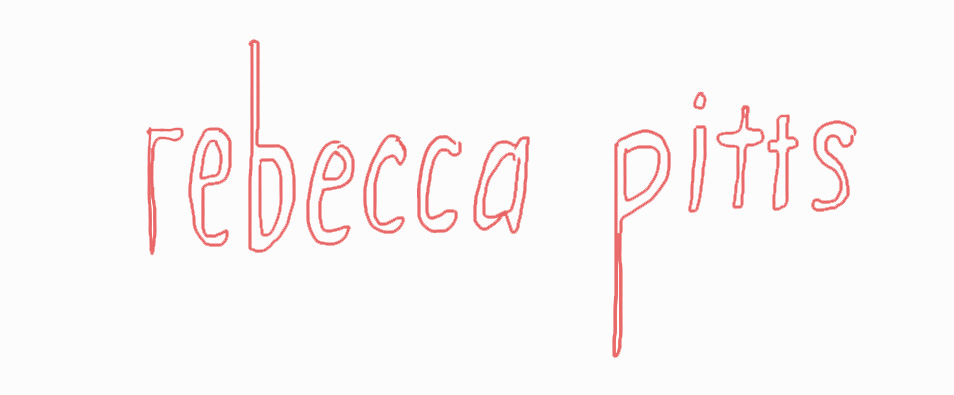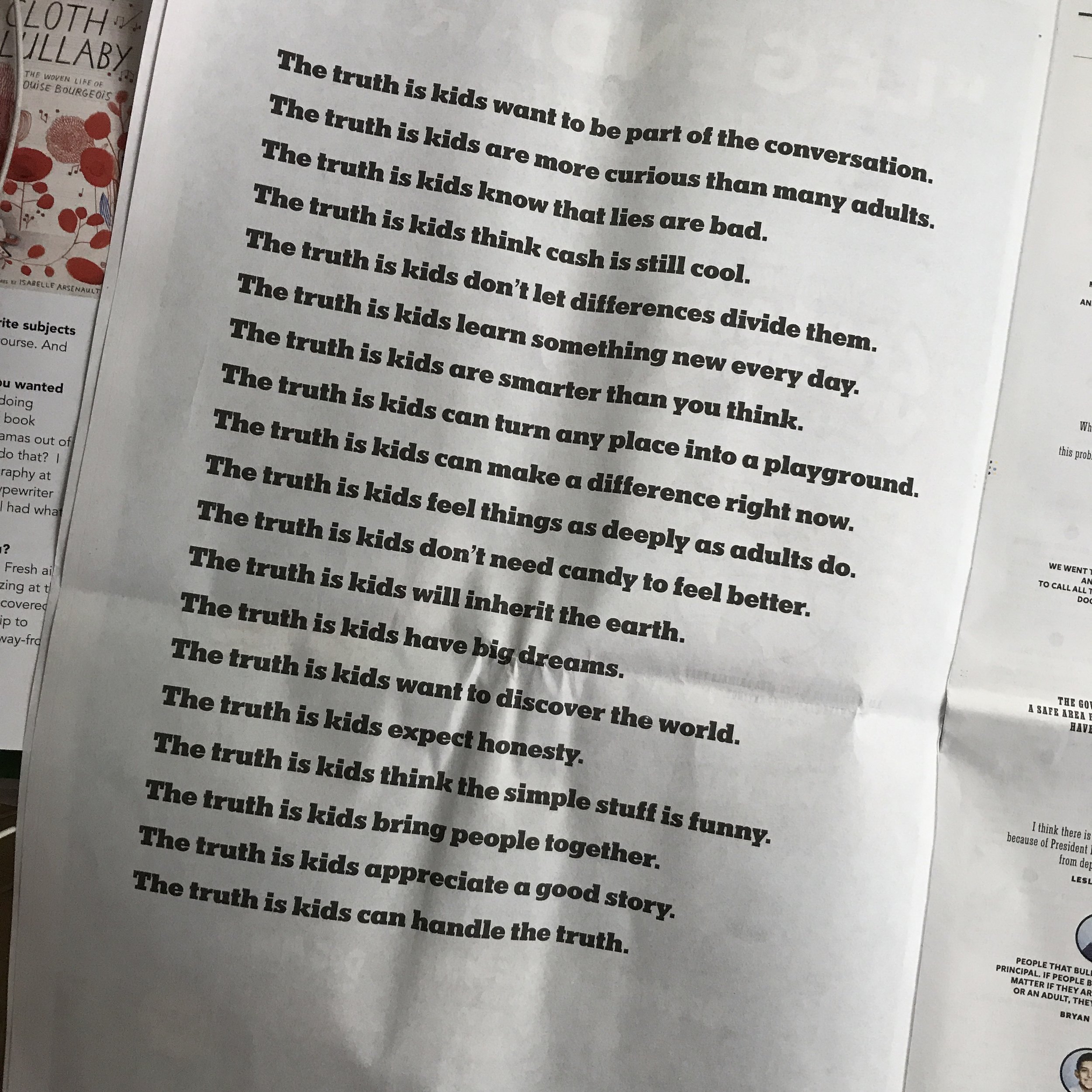Even the youngest of children consume media — books, television, children's magazines. School age children, who may be tremendously savvy technologically, aren't necessarily equipped to make sense of the information available to them. So how do we as parents, caregivers, and educators reinforce curiosity, healthy skepticism, critical thinking, and questioning? Below I've compiled a list of resources as a starting place; please reach out if you have other resources you'd love to share.
Media Literacy 101: 5 Steps to Help You Avoid Fake News (my article for Teen Vogue)
I talk with Sarah Murphy, Head Librarian at the Browning School and in New York City, and Brooke Gladstone of On the Media fame. They share their top insights for overcoming our biases and cross-checking the facts.
5 Ways Teachers Are Fighting Fake News (NPR)
NPR crowd-sources tips from teachers on how they are combating fake news and stepping up their media literacy game. Includes step-by-step exercises, with examples, for teachers of middle-grade students.
Featured Article: How to Deal With a Crisis of Misinformation (Brian X. Chen)
From the New York Times Learning Network, students will examine their own news habits, discover new techniques for consuming media, and creating habits around a healthy news diet.
Lesson Plan: How to Teach your Students About Fake News (PBS News Hour)
A 50-minute lesson plan for teachers of middle and high school students that guides students to study, analyze, and identify fake news stories.
In an Era of Fake News, Teaching Students to Parse Fact from Fiction (New York Times)
Real-world examples of teachers navigating students through the 'tsunami of information and misinformation' found online.
Breaking News Consumer's Handbook: Fake News Edition (On the Media)
An essential chart that is worth circulating in the frenzy of breaking news stories.
Can News Literacy Be Taught? (Nieman Reports)
“The approaches that are being bandied about are doomed to fail. We are in a freaking revolution. We bank differently. We date differently. We shop differently. We choose a Chinese restaurant differently. We do our research differently. We figure out what plumber to come to our house differently. But school is stuck in the past. What we need to do is … think hard about what the school curriculum really needs to look like in an age when we come to know the world through a screen.” Full of stats and background on the information crisis we are confronted with in the Internet age, along with examples of teachers and organizations who are guiding students in exercises of critical inquiry.
The Trouble with Reality: A Rumination on Moral Panic in Our Time (Brooke Gladstone)
An extended essay on the danger of living life solely within our bubbles, the tactic of lies that authoritarian regimes and the Trump Administration employ, and hope for living beyond our current state of unreality.
Raising Freethinkers: A Practical Guide for Parenting Beyond Belief (Dale McGowan)
Yes, it's possible to introduce young children to the ideas of curiosity, open-mindedness, and the world that lies beyond our immediate surroundings. As a person who does not identify with a particular religion, Raising Freethinkers is a salve to the parent who doesn't look to an external God as framework, but rather our own system of morals for guiding ourselves, and our children, with humanity through the world. For more thoughts on this idea, check out my essay on laying the groundwork for critical inquiry with preschool children.
Parent & Educator Guide to Media Literacy and Fake News (ConnectSafely.org)
This guide is a good starting place for educators and parents alike, with lots of practical tips and resources. Included are two exercises you can work through with students from the National Association of Media Literacy Education and the Yale Center for Emotional Intelligence.
Photos of my daughter enjoying New York Times for Kids, a delightful read for youngsters and grownups alike. (A version of this article was published on May 28, 2017.)






